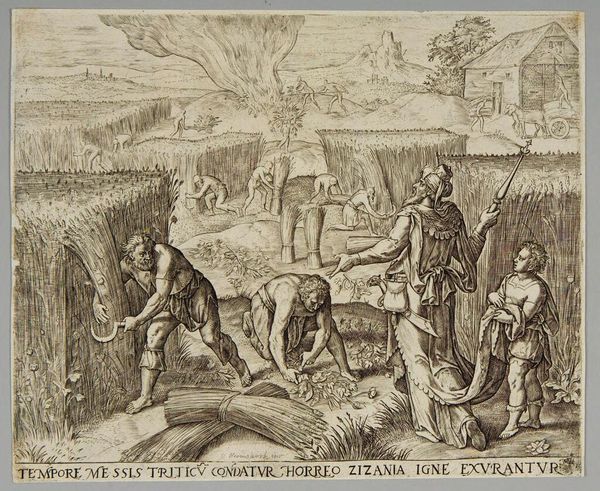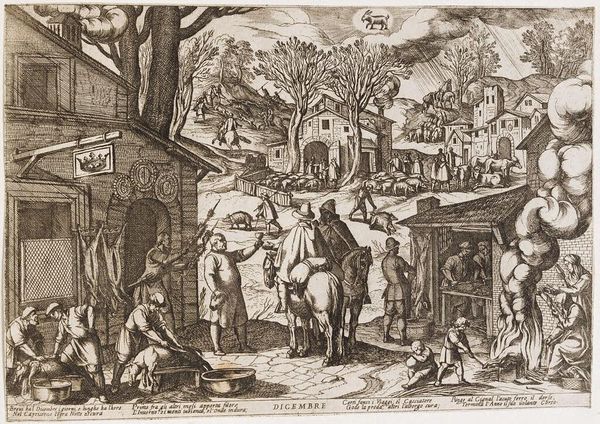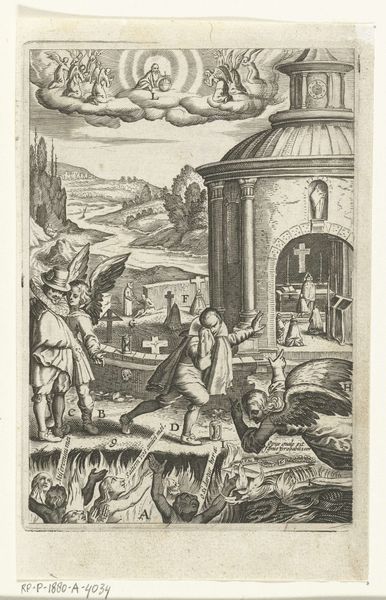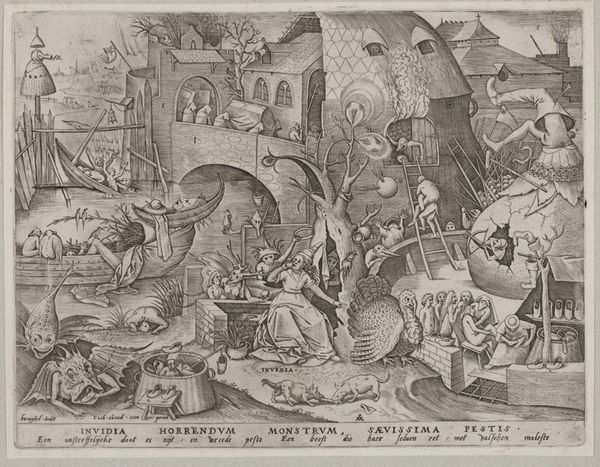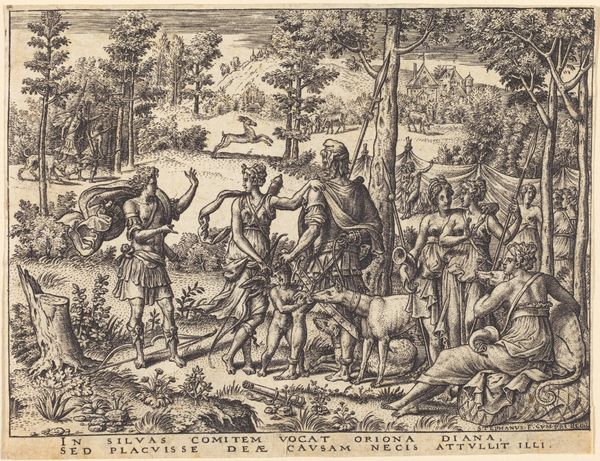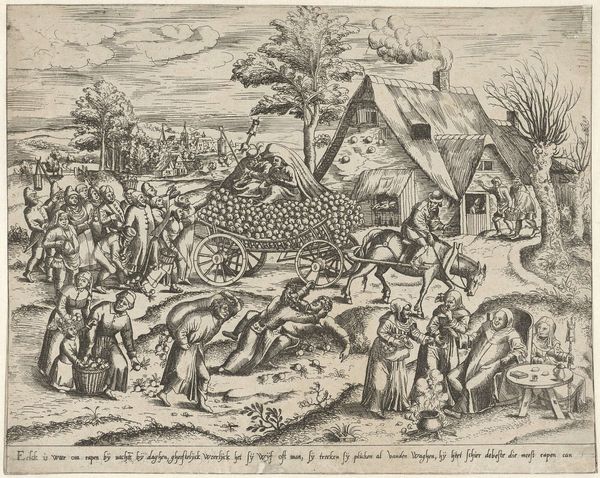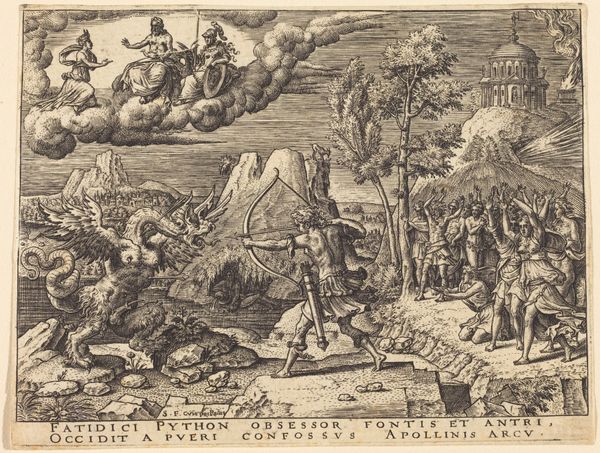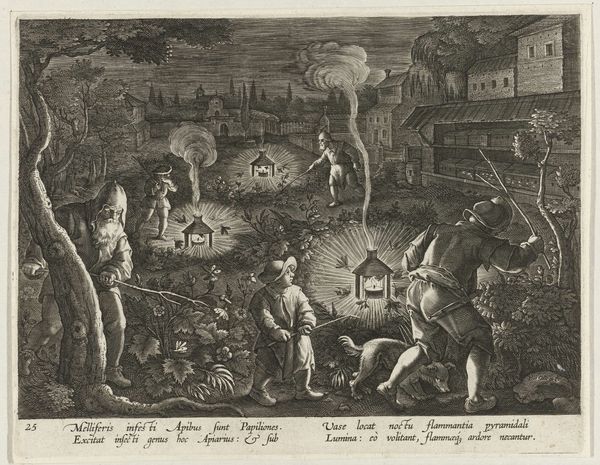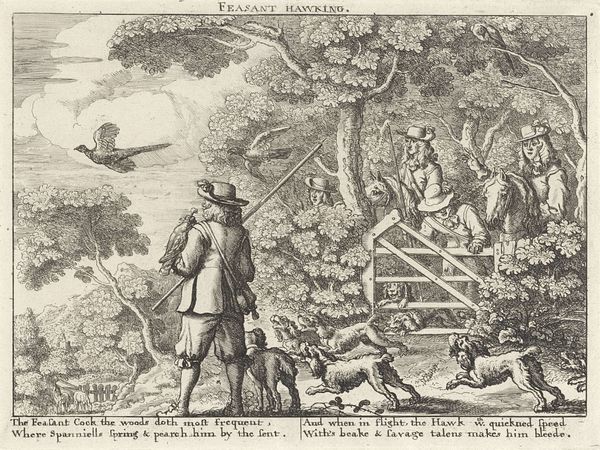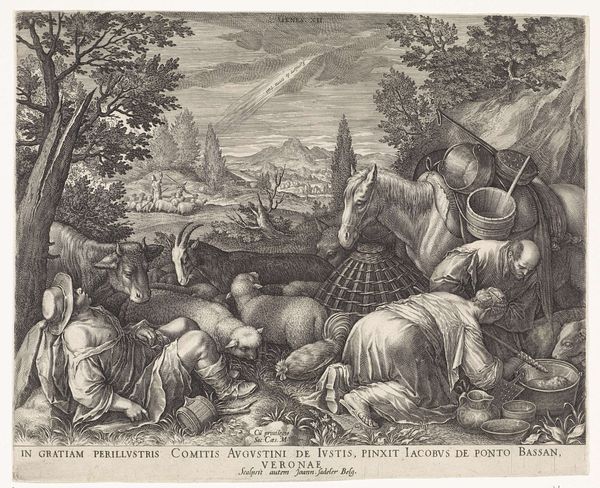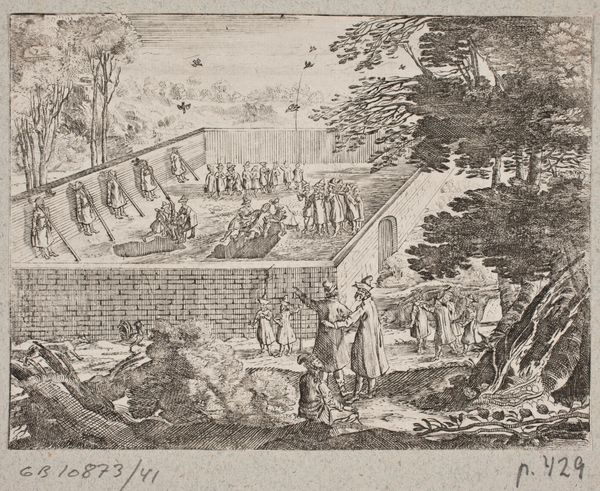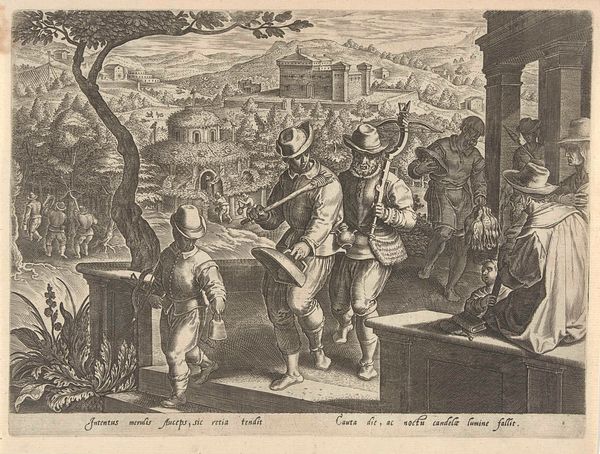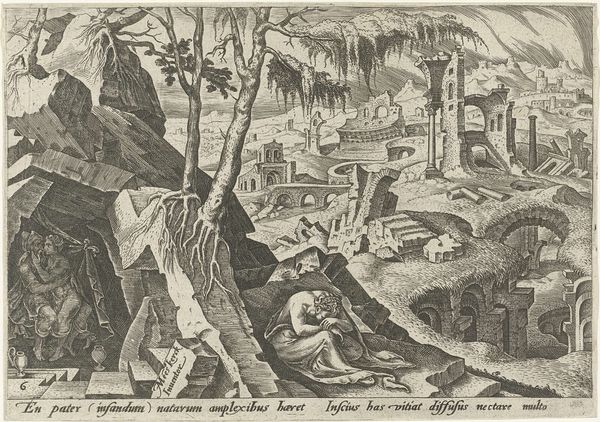
print, engraving
#
narrative-art
# print
#
landscape
#
figuration
#
genre-painting
#
northern-renaissance
#
engraving
Dimensions: height 200 mm, width 246 mm
Copyright: Rijks Museum: Open Domain
Curator: Let’s examine "Het verbranden van het onkruid en oogsten van het graan," or "The burning of weeds and harvesting of grain." This engraving, created between 1585 and 1700 by an anonymous artist, comes to us from the Rijksmuseum. Editor: The stark contrast in values immediately grabs you. There is such busyness! A dynamic, almost feverish quality across the scene... Are we looking at toil or trouble? Curator: It's important to place this print within its socio-political context. Agrarian life held significant symbolic weight, representing the cyclical nature of life, labor, and divine providence. How might anxieties about scarcity and societal order have influenced this imagery? Editor: I'm also struck by the central figure; there's a definite power dynamic established with their pose and attire. But also consider the simultaneous acts depicted - burning the weeds and gathering grain - a fascinating juxtaposition of destruction and nourishment occurring side by side. Who gets to decide what is deemed 'weed' and what is grain, and based on whose criteria? Curator: The landscape genre becomes a loaded space here. Look closely at how the artist represents the laborers: Do we see the dignified representation of the common worker, or is there an emphasis on their submission within a social hierarchy? Are we invited to sympathize or judge? Editor: I think we need to look beyond simplistic class readings to appreciate the complexities. Consider the visual language here; the artist positions this agricultural scene in what feels like an idealized past while quietly showing the imbalances of power inherent to land ownership and labour. Curator: Certainly. The ambiguity of its themes invites reflection on who benefits from narratives surrounding rural labour and idealized countryside. The act of "harvesting the grain" speaks to very modern and ongoing questions around worker's rights. Editor: It becomes, for me, less of a static scene and more of a commentary on ever-evolving socio-economic structures through symbolic visual cues. Curator: Exactly, engaging with "The burning of weeds and harvesting of grain" invites deeper engagement with themes that persist. Editor: An engaging prompt to reflect on agriculture's social, ethical, and economic frameworks.
Comments
No comments
Be the first to comment and join the conversation on the ultimate creative platform.
